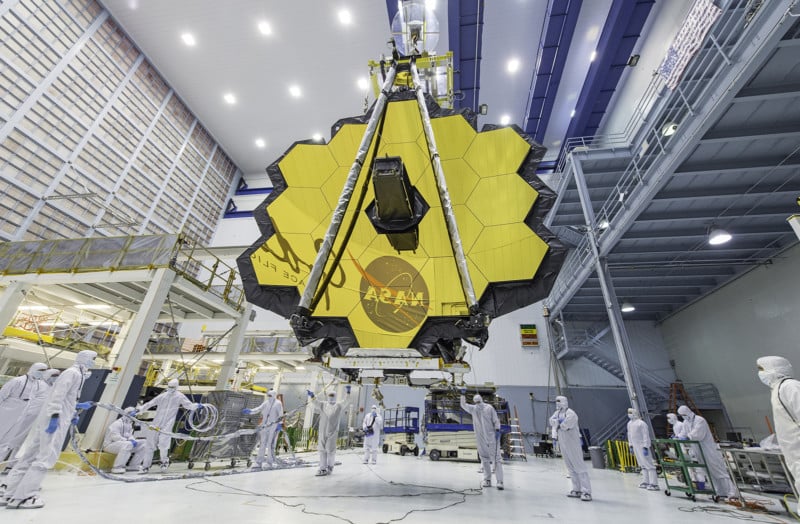James Webb Telescope Captures Incredible Photo of ‘Cartwheel Galaxy’
![]()
The James Webb Space Telescope has delivered a follow-up to its first images that were revealed last month. The photo is of the Cartwheel Galaxy and is a composite image created from its Near-Infrared Camera (NIRCam) and Mid-Infrared Instrument (MIRI).
The two cameras were combined into this image because together they reveal details that are difficult to see in the individual images alone, the Webb team explains. The MIRI data is colored red while the NIRCam data sees blue, orange, and yellow. The Webb team explains that amidst the red dust are many individual blue dots that are individual stars or “pockets” of star formation.
The Cartwheel Galaxy was formed as the result of a high-speed collision that occurred about 400 million years ago. It is made up of two rings: a bright inner ring and a colorful outer ring, both of which expand outward from the center of the shockwave in what the Webb team describes looks like a shockwave.
“Despite the impact, much of the character of the large, spiral galaxy that existed before the collision remains, including its rotating arms,” the Webb team explains.
“This leads to the ‘spokes’ that inspired the name of the Cartwheel Galaxy, which are the bright red streaks seen between the inner and outer rings. These brilliant red hues, located not only throughout the Cartwheel, but also the companion spiral galaxy at the top left, are caused by glowing, hydrocarbon-rich dust.”
The Webb team says that the observations here are in what is described as a “transitory” stage.
“The form that the Cartwheel Galaxy will eventually take, given these two competing forces, is still a mystery. However, this snapshot provides perspective on what happened to the galaxy in the past and what it will do in the future.”
A Mission to Look into the Past
The James Webb Space Telescope launched in December of 2021 after more than two decades of construction. The telescope cost more than $10 billion to produce and is the result of a monumental effort that was made by the contributions from thousands of scientists and engineers, along with over 300 partners, from 14 countries and 29 U.S. states.

The James Webb Space Telescope (JWST) is by far the largest and most powerful space telescope ever built. Weighing in at a whopping seven tons with a height of 28 feet. It casts a massive shadow over its predecessor, the Hubble Space Telescope featuring a mirror measuring 21 feet in diameter, which sits on top of a first-of-its-kind sunshield the size of a tennis court.
The result is an orbital observatory capable of capturing photos of incredible detail and resolution. The full resolution image of the Cartwheel Galaxy photo is 4,685 by 4,312 pixels.
Image credits: NASA, ESA, CSA, STScI, Webb ERO Production Team